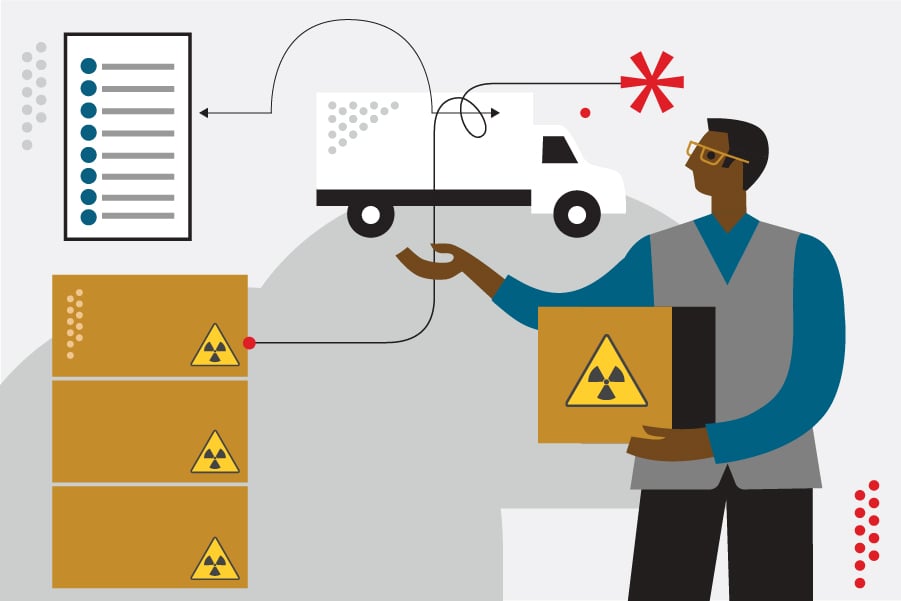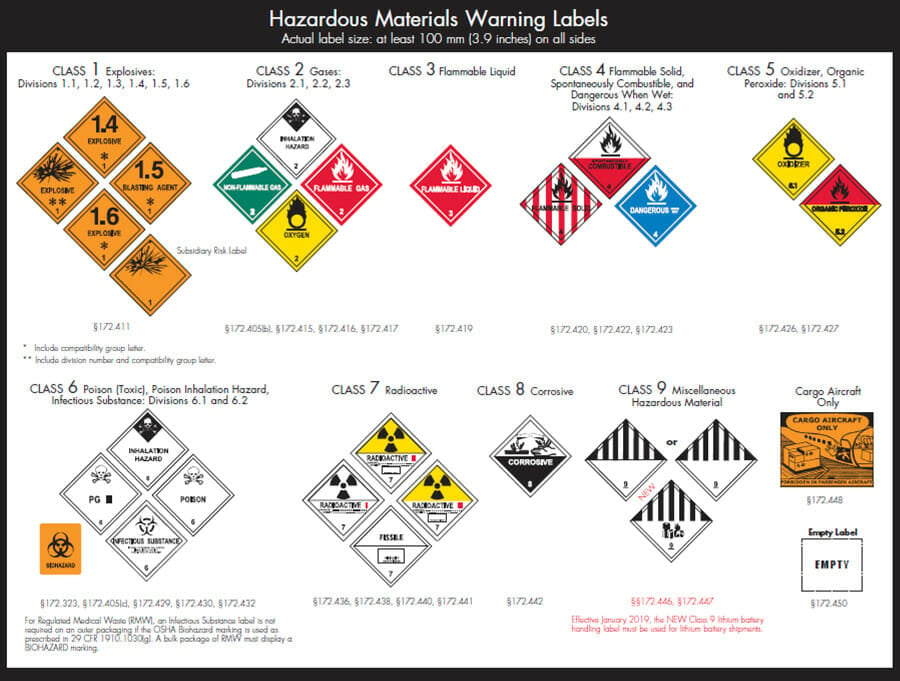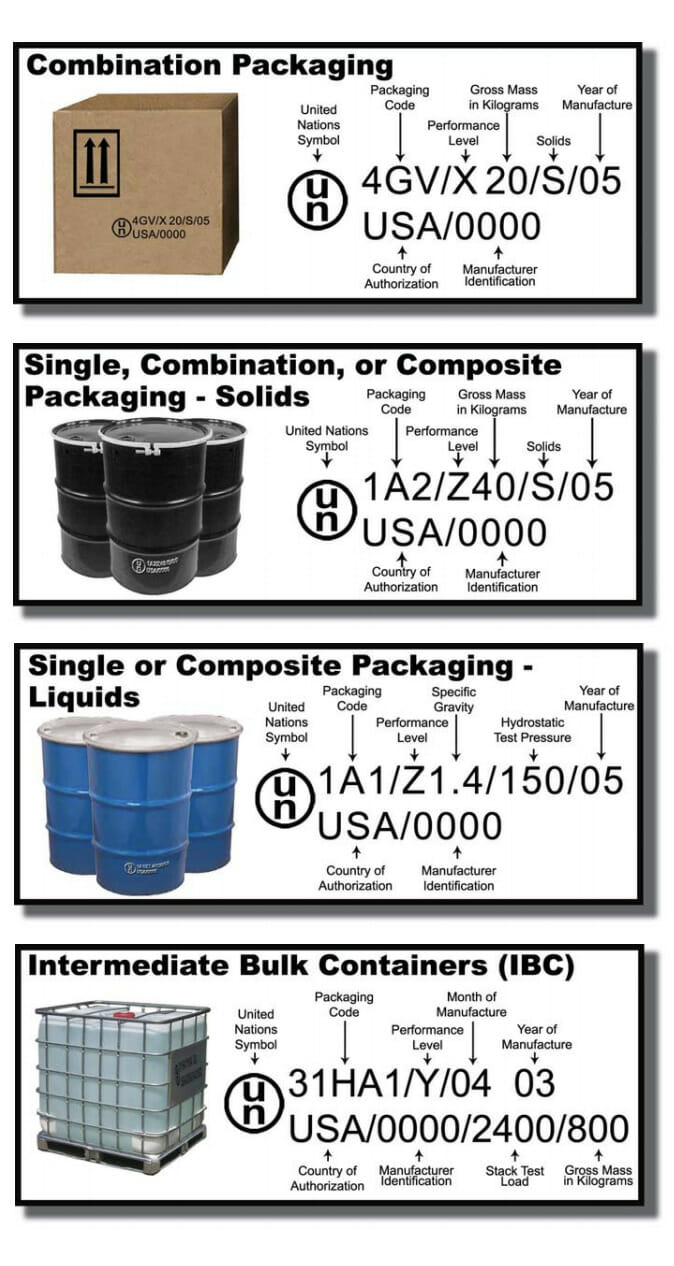Logistics
Industries
Technology & Innovations
E-commerce
E-commerce Fulfillment Services
Lease & Maintenance
Semi Trucks
Logistics
E-commerce
Lease & Maintenance
Buy Used Trucks

Most of us don’t think of products like perfume or nail polish as 'dangerous'. But there's a lot more to hazardous materials than meets the eye.
Shipping certain substances or chemicals involves risks that need to be carefully managed to ensure safe transportation and handling. This won't affect some merchants at all. While others, including cosmetics brands, will need to design their entire shipping strategy around the demands of HAZMAT shipping.
In this guide, we're going to cover:
HAZMAT shipping is defined as the shipping of dangerous goods, requiring special shipping and handling processes to minimize risk. This includes solids, liquids, and gases that can cause harm to people when improperly stored or packaged.
There are both federal regulations and individual carrier requirements concerning the classification of HAZMAT goods.
There are several sets of hazardous materials regulations to be aware of when shipping dangerous substances:
Title 49 code of federal regulations controls the domestic transportation of hazardous materials, including shipping, handling, and labeling protocols. Even if you're partnering with a fulfillment provider to handle HAZMAT shipping on your behalf, it's a good idea to have a basic understanding of Title 49. Especially CFR parts 100-185 which is overseen by the Pipeline and Hazardous Materials Safety Administration.
Title 49 covers the following:
The IMDG code regulates the safe shipping of hazardous goods by sea for international shipping. This is designs to protects both crew members and the marine environment from harmful substances.
The International Civil Aviation Organization (ICAO) is a UN agency that governs the standards for the international air transport of dangerous goods. The International Air Transport Association (IATA) is a non-governmental entity that covers private-sector standards, including HAZMAT shipping via commercial airlines.
The hazardous materials table divides substances into nine different classes depending on the level of risk they represent. Depending on the hazard class,

Materials that have a high likelihood of exploding. Not surprisingly, no class 1 items are permitted to travel via air or international transportation.
Includes: Dynamite, Fireworks, live ammunition, water emulsion blasting agents.
Any gas which has been compressed and stored for transportation (only surface transportation is permitted).
Includes: Aerosols, oxygen, natural gas canisters, carbon dioxide, lighters.
Flammable and combustible liquids are liquids that that will combust when making contact with a flame. These are divided into various flashpoints (the lowest temperature at which a substance will ignite):
Includes: Acetone (nail polish), adhesives, paints, gasoline, perfume, ethanol, vanish.
Flammable solids are materials that will combust when making contact with a flame. These are divided into further categories depending on
Includes: Sulphur, matches, sodium batteries, magnesium.
An oxidizer is a chemical or substance that causes combustion when exposed to oxygen, while organic peroxide is an organic compound with two oxygen atoms joined together, creating a chemically unstable substance that gives off flammable vapors.
Includes: Hydrogen peroxide, potassium permanganate, sodium nitrite, ammonium nitrate fertilizer, oxygen generators.
Poisonous material is a material, other than a gas, which is known to cause serious injury or death when inhaled or swallowed. This also includes infectious substances known or reasonably expected to contain pathogens, such as bacteria and viruses.
Includes: Biological products, forensic materials, methyl bromide, tear gas.
Radioactive substances are materials that emit radiation at a level greater than 0.002 microcuries per gram.
Includes: Enriched or depleted uranium, radioactive ores, medical isotopes, x-ray machines.
A corrosive substance is a liquid or solid that causes damage to human skin or corrodes steel or aluminum at an extremely fast rate.
Includes: Sulfuric acid, sodium hydroxide, batteries and battery fluid, drain cleaner, paint stripper.
Miscellaneous hazardous materials include all hazardous materials that don't fit into the definitions of Class 1 through to Class 8.
Includes: Lithium batteries, vehicles, first-aid kits, dry ice.
FedEx provides extensive information on how to ship hazardous substances, in addition to offering hazardous materials training that meets federal requirements for handling and shipping dangerous goods. FedEx offers Ground services (excluding Hawaii and Alaska) on all classes of hazardous goods except for class 6.
See the Hazardous Materials (FedEx Ground): How To Ship guide for more information.
UPS has a list of prohibited items, including but not limited to:
UPS will ship select prohibited items on a contractual basis with certain shippers that provide consistent volume and compliance with regulations. This includes alcohol, biological substances, and firearms (you can find the full list of prohibited items here). UPS offers select Air and Ground services for different classes of dangerous goods. You can find the full list of services here.
DHL complies with IATA regulations for all shipping of hazardous materials via Air. Shippers must be pre-approved by DHL Express to ship Dangerous Goods, in addition to notifying the carrier of their intent to ship in advance. They may also face additional charges depending on the nature of the item they're shipping.
USPS shipping services have restrictions on both domestic and international shipping for hazardous goods. However, some items are completely prohibited by both Ground and Air methods (see Domestic Shipping Prohibitions & Restrictions and International Shipping Prohibitions & Restrictions for more details).
Given the risk that hazardous goods present to both shipping personnel and consumers, shippers who don't comply with regulations can be liable for harsh penalties.
In the latest update in 2017, the US DoT increased fines for non-compliance with hazardous material transportation law:
"Per this final rule, the maximum civil penalty for a knowing violation is now $78,376, except for violations that result in death, serious illness, or severe injury to any person or substantial destruction of property, for which the maximum civil penalty is $182,877. In addition, the minimum civil penalty amount for a violation relating to training is now $471."
In sum, it pays to make sure that you're going HAZMAT shipping correctly, regardless of whether you do it regularly or only in exceptional circumstances.
First off, you need to be certain that a product is classified as a hazardous good - and if so, what class of hazardous good it is. This determines a range of procedures, from the packaging you need to use to whether you can ship via Air or Ground.
You can do this by consulting the item's Material Safety Data Sheet (SDS). These are required by law to accompany any hazardous materials or substances. MSDS provides the item's Proper Shipping Name, Class of Hazard, and the UN Identification Number, in addition to packaging and labeling requirements.
It's a requirement of the DoT for companies engaging in HAZMAT shipping to have specific training to properly classify, package, mark, and label dangerous goods for shipping. Ignoring this can leave you liable for serious fines.
'HAZMAT employees' are classified as anyone who:
By outsourcing the fulfillment and shipping of dangerous goods to a 3PL experienced in HAZMAT shipping, you can avoid having to go through this lengthy process.
Different classes of HAZMAT products and different quantities will require specific types of outer packaging. These are defined a 'packing groups' within Title 49 and is divided into:

Note: Be aware that there are also rules about combining different classes of HAZMAT products in the same package. Be sure to check the Dangerous Goods Segregation Table for more details.
HAZMAT packages need marking and labeling in specific ways to make sure that they're handled safely, such as package orientation or keeping packages away from heat. This needs to be done correctly, or parcel carriers may refuse to ship your package. Check the Hazardous Materials Markings, Labeling and Placarding Guide for more details.

HAZMAT shipping requires additional shipping papers for both Ground and Air. This includes:
You can find more information on the Hazardous Materials (HM) Shipping Papers on the DoT website.
Ryder is an experienced 3PL that works with a wide variety of retailers to handle and ship HAZMAT products, both domestically and internationally.
Our proprietary ecommerce software is designed to make HAZMAT shipping with major carriers as easy as possible, giving merchants the ability to set both item-level and bulk-action Order Rules for both packing and routing dangerous goods. This ensures that your fulfillment and shipping are carried out error-free so you can get back to focusing on your business.
HAZMAT shipping is easily one of the most complex and challenging workflows in ecommerce fulfillment - and there's no room for error. That's why it's a good idea to work with a 3PL who can manage processes like handling, packaging, and shipping paperwork to ensure that your products are transported quickly and safely.